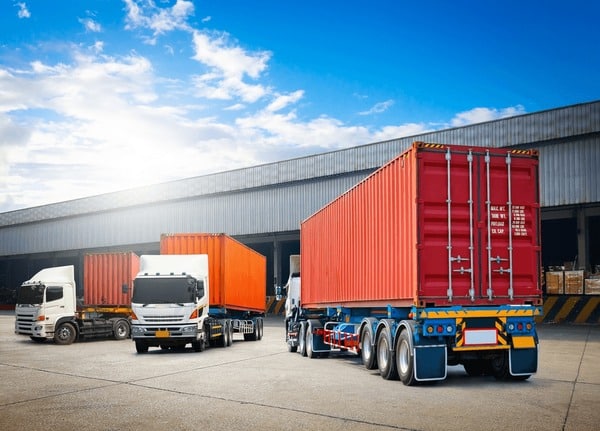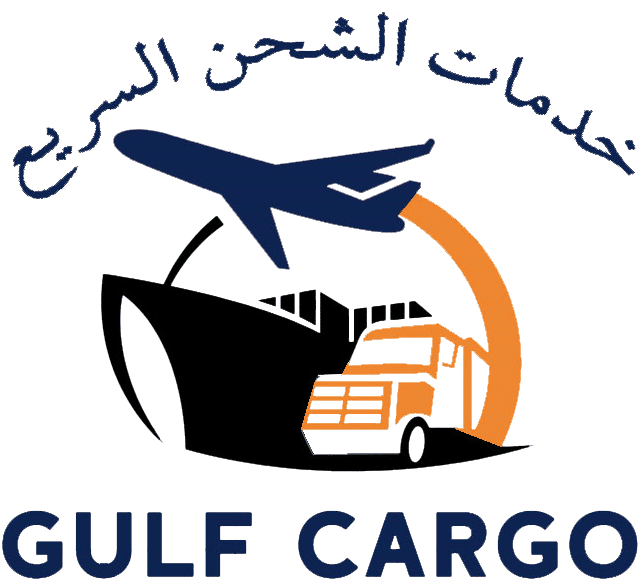
When it comes to moving goods across borders in the Gulf region, freight forwarding between the UAE and Kuwait is a key route for many businesses. Whether you’re importing raw materials, sending finished goods, or relocating assets, understanding how freight forwarding works on this corridor can save you time, money, and headaches. This article walks you through every step — from planning and documentation to transport modes, customs, challenges, and tips for smooth delivery.
1. Why Freight Forwarding UAE → Kuwait Matters
Trade between the UAE and Kuwait is growing steadily. The UAE has strong logistics infrastructure — modern ports, excellent road networks, and efficient customs systems. Kuwait, on the other hand, is keen on diversifying imports and expanding its industrial and retail sectors. That makes the UAE–Kuwait freight route a busy and competitive corridor.
Freight forwarding plays a critical role: the forwarder acts as an expert intermediary who organizes pick-up, documentation, inland transport, customs clearance, and final delivery — helping you avoid delays or regulatory pitfalls.
2. Main Transport Modes: Road, Sea & Air
When shipping from UAE to Kuwait, there are three common modes:
-
Road (Land / Trucking): Probably the most used and practical option for many GCC shipments. Daily departures, direct trucking, and shorter transit times across the Gulf surface routes (via Oman, Saudi Arabia, etc.) make road freight efficient. Many UAE–Kuwait shipments go by road as part of GCC land-link logistics. Top Terminal Logistics+2BBC Cargo & Shipping Services+2
-
Sea (Ocean / Sea Freight): For bulky, heavy, or non-urgent cargo, sea freight is cost-effective. Ports like Jebel Ali in Dubai and Kuwait’s seaports can be connected via container shipping, roll-on/roll-off vessels, or feeder services. BBC Cargo & Shipping Services+2alfarescargo.com+2
-
Air Freight: For urgent, lightweight, or high-value goods, air cargo is the premium choice. It’s faster, though much more expensive per kg. Often used for spare parts, electronics, time-sensitive items, or goods with tight delivery windows.
In many cases, freight forwarders arrange multimodal transport — combining road, sea, and air segments as needed to balance cost vs. speed.
3. Steps in Freight Forwarding UAE → Kuwait
Here’s a simplified step-by-step process you can expect when using a freight forwarder:
-
Inquiry & Quotation
You share details: origin address, destination address in Kuwait, weight, dimensions, commodity type, packaging, and preferred delivery time. The forwarder evaluates and gives you a price estimate. -
Booking & Confirmation
You accept the quote, and the forwarder books transport (truck, vessel, airplane) and reserves space. -
Pickup & Consolidation
The forwarder either collects goods from your warehouse in UAE or you deliver them to a consolidation hub. For less-than-truckload (LTL) shipments, they consolidate multiple shipments into one container or truck. Top Terminal Logistics+2السيف العربي+2 -
Export Documentation & Clearance in UAE
Your forwarder handles export formalities: commercial invoice, packing list, export permits (if needed), customs paperwork, certificates of origin, etc. -
Main Transit (Road / Sea / Air)
The consolidated cargo travels via the chosen route. The forwarder monitors the shipment and handles any intermediate stops, transshipment, or cross-border handovers. -
Import Clearance in Kuwait
Once cargo reaches Kuwait’s border or port, the forwarder works with Kuwaiti customs, arranges duties, pays fees, and obtains clearance. -
Final Delivery / Last Mile
From the Kuwaiti port, airport, or border crossing, the freight forwarder or a local partner arranges the last-mile delivery to your consignee’s address. Proof of delivery (POD) is collected and shared.
Throughout the journey, the forwarder provides tracking updates and handles possible exceptions (delays, inspections, documentation issues).
4. Customs, Regulations & Challenges
Navigating cross-border rules is one of the trickiest parts. Here are common challenges and how to mitigate them:
-
Customs Formalities & HS Codes
Accurate classification of goods (Harmonized System codes) is essential. Misclassification can lead to delays or penalties. -
Permits & Licenses
Some goods (chemicals, pharmaceuticals, agricultural products) require special permits, health certificates, or inspections. -
Duties & Taxes
The consignee in Kuwait is generally responsible for import duties and taxes unless you choose a Delivered Duty Paid (DDP) arrangement. -
Documentation Errors
Missing or incorrect documents are a leading cause of hold-ups. Always double-check invoices, packing lists, certificates, etc. -
Transit Delays & Border Checks
Security inspections, customs audits, or transport bottlenecks can slow movement. Buffer time in planning is wise. -
Packaging & Handling
For fragile, oversized, or heavy goods, proper packaging and securing are vital. Damage in transit can lead to claims and delays. -
Communication & Coordination
Because the shipment crosses jurisdictions, the forwarder must coordinate with partners in both countries and maintain clear communication with you.
A dependable forwarder will foresee these issues and manage them proactively.
5. FTL vs LTL: Which Mode to Choose?
-
FTL (Full Truck Load): Your shipment occupies the full capacity of the truck. It travels directly without stops for other cargo. Best for large volumes, heavy goods, or time-sensitive deliveries. It reduces handling and risk of damage. S A G Logistic Services LLC
-
LTL (Less Than Truckload): Your goods share space with other shipments. This is more cost-effective for smaller loads, though transit time may increase due to multiple stops. Several UAE→Kuwait forwarders advertise daily LTL services. Top Terminal Logistics+1
Your forwarder will advise which makes sense based on cargo size, urgency, and cost constraints.
6. Value-Added Services You Should Expect
A professional freight forwarder will often offer extra services beyond basic transport:
-
Warehousing & Storage
Short-term or long-term storage in UAE or Kuwait, consolidation, inventory management. -
Cargo Insurance
To protect against loss, damage, theft. Many forwarders offer optional insurance plans. -
Packaging & Palletizing
Expert packing, crating, and pallet loading to ensure cargo safety. -
Customs Consulting & Advice
Guidance on tariff classification, preferential trade agreements, handling prohibited goods. -
Real-Time Tracking & Visibility
Online portals or mobile tracking so you can see where your shipment is. -
Special Handling & Project Cargo
Services for oversized, heavy machinery, temperature-sensitive items, or complex logistics. -
Door-to-Door (Full Service)
The forwarder handles everything from your warehouse in UAE right up to the delivery address in Kuwait.
These extras often differentiate a reliable forwarder from a basic carrier.
7. Approximate Transit Times & Costs
Although each shipment is unique, here’s a rough idea:
-
Road freight between UAE and Kuwait typically ranges from 1 to 3 days, depending on origin, route, and border conditions. BBC Cargo & Shipping Services+2السيف العربي+2
-
Sea shipments might take longer depending on vessel schedules and port handling time.
-
Air shipments generally deliver within 1 day once airborne, but additional collection and delivery add time.
Costs depend heavily on weight, volume, route, commodity, handling, and service level (e.g., express vs economy). Always obtain detailed quotes from several forwarders.
8. Tips for a Smooth Freight Experience
-
Plan early — allow extra days for customs or inspections.
-
Provide accurate data — dimensions, weight, commodity, HS codes.
-
Choose a forwarder with UAE–Kuwait route experience — they’ll know the regulations, preferred corridors, and local contacts.
-
Ask for door-to-door service — so you don’t need to manage multiple hand-offs.
-
Request a breakdown of costs — transport, customs, handling, duties, insurance.
-
Insure high-value cargo — don’t rely solely on base coverage.
-
Communicate frequently — stay in touch with your forwarder and request updates.
-
Use high-quality packaging — padding, crates, pallets, shrink wrap — especially for fragile goods.
-
Understand incoterms — whether you handle import duties (DDP) or the consignee does (DAP, FOB).
-
Check partner credibility — ensure the forwarder has good reputation, licensing, and references.
9. Choosing the Right Freight Forwarder
To find a freight forwarder you can trust for UAE → Kuwait shipments, look for:
-
Proven experience on the UAE–Kuwait route
-
Strong network of agents in both countries
-
Transparent pricing and clear documentation
-
Real-time tracking and good communication
-
Capabilities for customs handling, insurance, and value-added logistics
-
Security, licenses, and insurance backing
-
Responsive customer service
You may even ask for references or case studies from clients who ship along the same route.

